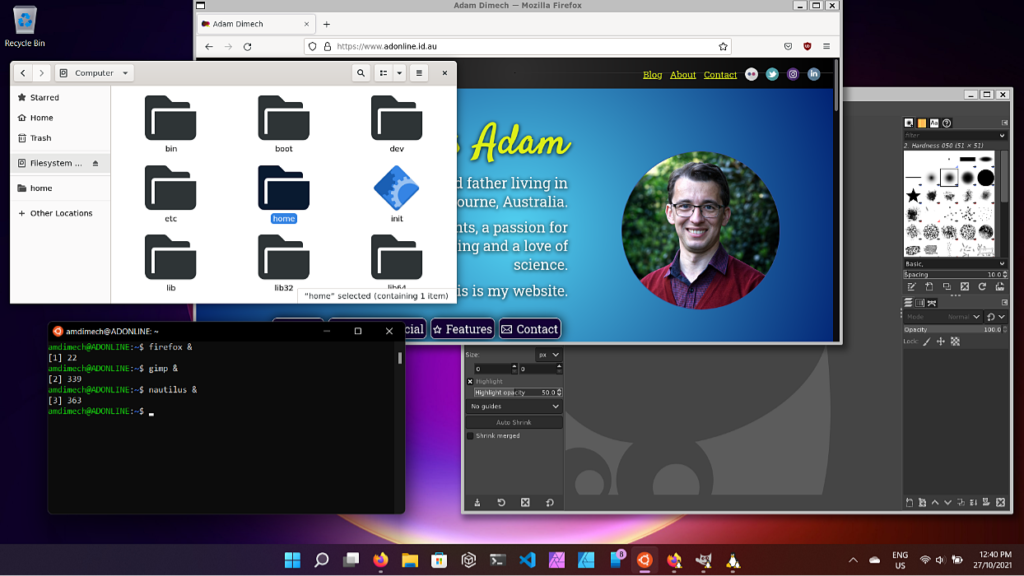Run Linux GUI apps in Windows 11
Use Windows Subsystem for Linux (WSL) to run Linux graphical user interface (GUI) programmes in Windows.
To get this working, you will need Windows Subsystem for Linux version 2 (WSL2) running on Windows 11 Build 22000 or higher. I will assume that you are running Ubuntu. If you are using a different distribution than Ubuntu, you may need to use a different package manager than apt.
If you meet these requirements and have WSL2 installed, set-up is as follows:
Step 1: Update WSL
Open PowerShell (or a PowerShell in Windows Terminal) with administrator privelleges and run the following command:
wsl --updateThis will ensure that you have the latest version of WSL2. You will need to restart WSL for the update to take effect. You can restart WSL by running the shutdown command in PowerShell:
wsl --shutdownClose Powershell and open the Ubuntu command prompt. Update your packages via the following command:
sudo apt update
Step 2: Install Packages
Gedit is the default text editor of the GNOME desktop environment and can be installed with the following command in the Ubuntu terminal:
sudo apt install gedit -yTo launch your bashrc file in the editor, enter:
gedit ~/.bashrcGIMP is a free and open-source raster graphics editor used for image manipulation and image editing, free-form drawing, transcoding between different image file formats, and more specialised tasks. To install GIMP, enter the following command:
sudo apt install gimp -yTo launch GIMP, type gimp into the terminal, then press ENTER.
Nautilus, also known as GNOME Files, is the file manager for the GNOME desktop (similiar to Windows File Explorer). To install Nautilus, enter the following command:
sudo apt install nautilus -yTo run Nautilus, enter nautilus.
VLC is a free and open source cross-platform multimedia player and framework that plays most multimedia files. To install VLC, enter the following command:
sudo apt install vlc -yTo launch VLC, enter vlc.
X11 is the Linux windowing system and this is a miscellaneous collection of apps and tools that ship with it, such as the xclock, xcalc calculator, xclipboard for cut and paste, xev for event testing, et cetera. To install X11, enter:
sudo apt install x11-apps -yTo launch, enter the name of the tool you would like to use. For example xcalc, xclock et cetera.
Finally, to install Mozilla Firefox, enter the following command:
sudo apt install firefox -yTo launch Firefox, enter firefox.

Step 3: Fix some bugs
After completing these steps, I ran GIMP but encountered a “(gimp:17967): Gtk-WARNING **: 10:09:36.892: Unable to locate theme engine in module_path: "pixmap",” error, which was fixed via the following command:
sudo apt-get install gtk2-engines-pixbufNautilus also had a problem locating bookmarks. I created a bookmark and then ran the following command to update all of the Ubuntu packages and ensure that everything was up-to-date:
sudo apt-get update && sudo apt-get dist-upgradeStep 4: Enjoy
Here’s a screen shot of my Windows 11 machine running the Ubuntu terminal, GIMP, Nautilus and Firefox:

With WSL2, it’s possible to directly pin Linux apps to the Windows start menu if so desired.
Comments
No comments have yet been submitted. Be the first!